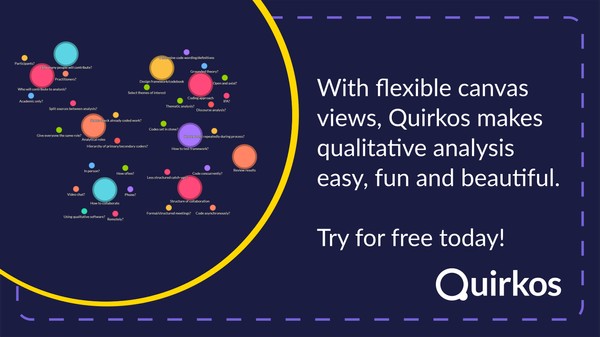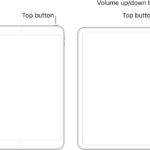Interviews are a cornerstone of qualitative research, often cited in academic papers. However, the term “in-depth semi-structured interview” can be vague. This article delves into the specifics of creating an effective interview guide, a crucial tool for conducting insightful qualitative research.
Understanding Qualitative In-Depth Interviews
An “in-depth” interview typically involves a one-on-one conversation focusing on a specific topic explored in detail. These interviews often last around an hour, resembling a discussion but with a clear research purpose. As Burgess (2002) notes, they are “conversations with a purpose.”
Qualitative Interviews vs. Quantitative Surveys
Unlike quantitative surveys with fixed questions, qualitative interviews seek detailed, nuanced responses, acknowledging the lack of a “one-size-fits-all” approach, especially when exploring personal experiences. While a flexible approach is favored, MacNamara (2009) emphasizes the need to collect consistent information across interviews, providing focus while allowing for adaptability.
Types of Qualitative Interviews
Turner (2010) identifies three types of qualitative interviews:
- Informal Conversation (Unstructured): A free-flowing discussion.
- General Interview Guide (Semi-structured): Using a guide with topics and questions.
- Standardized Open-Ended (Structured): Following a set list of questions.
This article focuses on the “interview guide” approach, striking a balance between structure and flexibility.
What is a Qualitative Interview Guide?
An interview guide serves as a cheat sheet for the interviewer, containing a list of questions and topics to cover. It’s not a script to be read verbatim but rather an aide-mémoire. Silverman (2013) highlights that interviewers can deviate from the guide to explore unexpected but relevant areas or skip sections irrelevant to the participant.
Examples of Semi-Structured Interview Guides
Published examples of interview guides are scarce. They typically consist of a list of short questions and follow-up prompts, grouped by topic. A typical guide might contain about a dozen of these.
Sample Question Set for Qualitative Interviews
The Qualitative Researcher Journeys project offers an open-source dataset of real qualitative interviews with researchers. Here are some example questions from the project’s qualitative interview guide:
- What kind of researcher are you?
- How has that changed since you started your career?
- What was your first piece of qualitative research about?
- What did you learn from doing that?
- What’s your favorite methodological approach?
- Have you ever taught qualitative research?
- Do you teach qualitative research now?
- To whom did/do you teach qualitative research?
- Which aspects did/do you teach?
- What did/do you most enjoy about it?
- What did/do you find challenging?
- What do students most enjoy when learning?
- What do they find challenging?
- Do you have any funny stories that you like to tell others? Why that story?
- What (if any) cautionary tales do you use?
- Are there any experiences that you avoid sharing with students? Why is that?
- If you do not teach Qualitative Research, why is that?
- Is qualitative research a common paradigm in your department?
- What’s that like for you as a researcher?
- As a teacher?
- How have things changed since you first started researching?
- How have you changed since you first started?
- What do you do differently now?
- Are there any things that you find easier than others?
- Which part of the research process is your favourite?
- If you were give your younger self a piece of advice what would that be?
- Anything else you want to say or have heard through this piece of work?
9 Top Tips on How to Create Interview Guide
Based on years of experience, here are nine essential tips for writing effective semi-structured interview guides:
-
Ensure Open-Ended Questions, Relevance, and Respondent-Focused Phrasing: Your questions should directly address your research questions but be phrased in a way that resonates with the participant. Avoid jargon and leading questions, encouraging detailed answers beyond simple “yes” or “no” responses.
-
Link Questions to Analytical Approach: Align your questions with your chosen method of analysis. For narrative analysis, prompt storytelling. For Interpretative Phenomenological Analysis, delve into interpretations of experiences. Ensure the questioning style supports your analytical approach.
-
Include Optional Follow-Up Questions with Prompt Words: Prepare follow-up questions to explore interesting points raised by the interviewee. Use prompt words to remind you of potential areas for deeper inquiry. For example, “When did you first visit the doctor?” could have prompts like “Why then?”, “Were you afraid?”, or “Who was with you?”.
-
Be Flexible with Question Order: Group your questions by topic but be prepared to deviate from the planned order. Listen actively to the interviewee and connect their responses to relevant topics, creating a natural flow of conversation.
-
Know the Interview Guide Backwards: Familiarize yourself thoroughly with the guide. While having a printed copy is helpful for reference and note-taking, aim to know the questions and topics in any sequence to adapt to the conversation.
-
Aim for Natural Conversation: Strive for a relaxed and non-combative discussion. Start with an easy question to ease the participant into the interview. Engage as a normal human being: nod, acknowledge, and empathize. Be mindful of sharing potentially leading opinions or making the discussion about yourself. Legard, Keegan and Ward (2003) note that a good in-depth interview will appear natural, but is far from a normal conversation.
-
Discuss the Interview Guide with Research Team/Supervisors: Seek feedback from colleagues or supervisors. Prepare the guide well in advance to allow time for discussion and revisions. Experienced interviewers can offer valuable insights into wording and structure.
-
Adapt the Guide as You Collect Data: Recognize that you may need to revise your interview guide based on initial interviews. If significant revisions are made, keep track of the different versions and which respondents were interviewed with each version.
-
Test Timing and Prioritize Questions: Time the questions to ensure you can cover essential topics within the allotted time. Have lower-priority questions that can be dropped if needed. Aim to condense the guide to one page for easy reference.
Semi-structured interviews are challenging and improve with practice. Avoid relying too heavily on the guide, which can lead to closed-off responses and missed opportunities. Embrace flexibility and treat the guide as a tool, not a rigid script. Juggling questioning, listening, topic awareness, and ensuring coverage requires skill but yields rich research data.
 A screenshot of the Quirkos software, showcasing its flexible canvas views designed to make qualitative analysis easy and engaging. The software's visual interface helps researchers to organize and analyze data efficiently.
A screenshot of the Quirkos software, showcasing its flexible canvas views designed to make qualitative analysis easy and engaging. The software's visual interface helps researchers to organize and analyze data efficiently.
Remember to explore the resources mentioned above and the multitude of excellent articles and textbooks on qualitative interviews.
Consider using qualitative software like Quirkos to enhance the research process. The website also provides valuable articles, including guides on qualitative interviewing, transcribing qualitative interviews, and recording audio. Stay updated by subscribing for email updates or following the Mastodon feed at mastodon.online/@quirkos.

